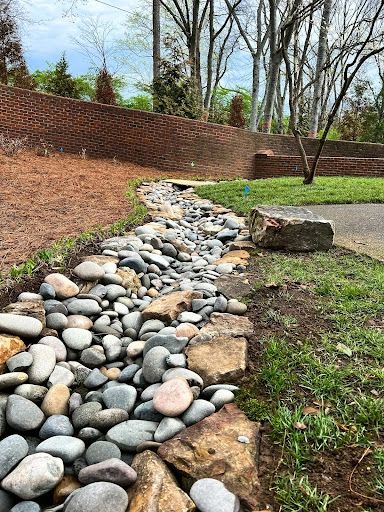Imagine stepping out into your backyard on a beautiful spring day, only to be greeted by unsightly water puddles that mar the lush green grass. Water pooling in your yard may not seem like a significant issue at first, but it can lead to various problems, such as drowned plants, damaged foundations, and mosquito breeding grounds. This comprehensive guide will equip you with everything you need to know to effectively resolve water pooling issues in your yard and restore its pristine condition.

Image: groundupfoundationrepair.com
Causes of Water Pooling in Yards
Before we delve into solutions, let’s understand the primary causes of water pooling:
- Poor drainage: The most common culprit is improper yard drainage, which hinders water from effectively draining away from your property.
- Compacted soil: Soil that has become heavily compacted over time can impede water absorption, leading to surface runoff and pooling.
- Sloping yards: Yards with uneven grading or steep slopes may naturally direct water flow to low-lying areas, causing pooling.
- Blocked gutters and downspouts: Clogged gutters and downspouts can overflow, dumping large amounts of water into the yard.
- Underground springs or leaks: In some cases, water pooling can indicate the presence of underground springs or leaks from pipes or septic systems.
Effective Solutions for Water Pooling
Now that we’ve identified the potential causes, let’s explore effective solutions to fix water pooling in your yard:
1. Improve Soil Drainage
- Aerate your soil: Aeration involves poking holes in the soil to allow better water penetration and root growth. Use a core aerator for best results.
- Amend your soil: Mix organic matter like compost or sand into your soil to improve its drainage capacity.
- Install a French drain: A French drain is a perforated pipe buried underground to collect and redirect excess water away from problem areas.

Image: greenwaynashville.com
2. Address Slope and Grading Issues
- Regrade your yard: If your yard has uneven grading, consider regrading it to create a gentle slope that encourages water flow away from your home and property.
- Install swales or dry creeks: Swales are shallow channels that divert water runoff to designated drainage areas. They can be lined with plants to enhance aesthetics.
3. Clear Gutter and Downspouts
- Regularly clean your gutters and downspouts: Remove debris like leaves and dirt to prevent blockages and ensure proper water flow.
- Install gutter extensions: Extend your downspouts away from your home’s foundation to direct water further away.
4. Check for Underground Leaks and Springs
- Inspect your pipes and septic system: Check for leaks in water lines, drains, or your septic system. Repair any leaks promptly.
- Consult a professional: If you suspect an underground spring, seek professional advice from a hydrologist or geologist to determine the best course of action.
5. Plant Water-Loving Plants
- Introduce moisture-loving plants: Strategic placement of water-loving plants like ferns, hostas, and willows can help absorb excess water from the soil.
- Create rain gardens: Rain gardens are designed specifically to collect and soak up rainwater, mitigating water pooling issues.
How To Fix Water Pooling In Yard
Conclusion
With these practical solutions, you can effectively address water pooling in your yard, restore its beauty, and protect your property from potential damage. Remember to carefully assess the underlying causes, choose the most appropriate solution, and implement it thoroughly. By taking these steps, you can transform your waterlogged yard into a thriving outdoor oasis that enhances your quality of life and property value.